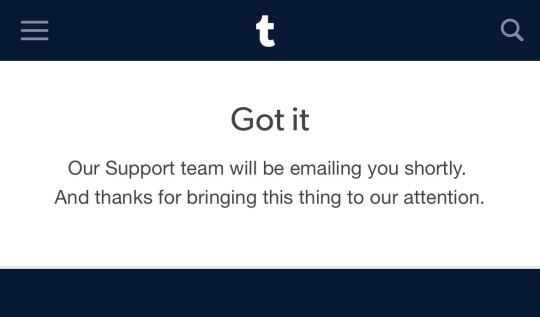#robotic desktop automation
Explore tagged Tumblr posts
Text
Robotic Desktop Automation: Everything You Should Know
In today’s rapidly evolving technological landscape, businesses are constantly seeking innovative ways to enhance efficiency and reduce operational costs. Robotic Desktop Automation (RDA) has emerged as a game-changer, offering numerous benefits for companies looking to streamline their processes.
This comprehensive guide will delve into everything you need to know about RDA, highlighting key aspects, benefits, and considerations for choosing the right RPA Service Company.
0 notes
Note
I’m trying to figure out: if a robot girl takes a screenshot what’s it of? What she’s seeing? But a screenshot is usually a capture of output, not input, yeah? I’ve always thought of robot girls as running a “headless” OS and it just occurred to me that I don’t know what happens if you take a screenshot on those.
So to answer in reverse order: on a headless OS you usually just can't screenshot a headless OS. There's no screen to screenshot. In the rare case when you can screenshot it, you'll get a standard desktop with nothing running, because all the programs running don't use the GUI. (Although I've found out the hard way that even when you're trying to do that, sometimes programs will still open up dialog boxes. it's really terrible, never try to automate windows and visual studio, god).
As for robot girls, I imagine they do have a desktop, they're not headless. So like, you'd see some highly customized linux desktop looking thing, and among the windows open would be something like OBS, showing the input from her eyes.
So you would get a screenshot of what she's seeing, yeah, but you might also get things like system monitors (fans ramping up from being kissed by two girls at once), terminals doing various things, and browser windows to different pages. like googlin' "how do you kiss girls?" and things like that.
the desktop background is a cute anime girl or an os-tan, of course.
725 notes
·
View notes
Text
Hate the new desktop layout that the staff is experimenting with? Dreading the idea/possibility of reblog chains going away via collapsible reblogs? Any other features or changes that you do not like? Send them your feedback with a Support form!
1. Go to https://tumblr.com/support.

2. Choose the "Feedback" category.

3. Fill out the big "The more details, the better" box below your chosen category with whatever feedback or criticisms you want to share. Please keep in mind that you should NOT use this as an excuse to be rude or condescending towards the staff, no matter how annoyed you are at them at making these meaningless changes.

4. If you are able to, provide them with an image to help give the staff and support team a better idea of what you're talking about. The support form only allows one image, so if you have more than multiple images that you want to include, compile them all into a single, organized image file to share.

5. Choose whether or not it's relevant to your blog. I leave it as "None selected" because every feedback I share and issue/bug I report is typically regarding what's affecting the Tumblr userbase as a whole.

6. Not providing a screencap for this step for obvious privacy reasons, but make sure your account email listed in the form is the same one you use to log into your account with.
7. Prove to reCAPTCHA that you're not a robot and send your support form.



(Make sure to double check by seeing if your email inbox received an automated message from the support team.)
And that's it! It is that easy to share your feedback to the staff. Remember the various instances the staff rolling back on some of the questionable changes made to the mobile apps? It was because of these feedback forms; sending them has a larger change of them getting noticed by them instead of tagging staff and support in posts and reblogs.
#my post#tumblr#tumblr staff#tumblr support#tumblr feedback#tumblr dashboard#tumblr update#tumblr changes
256 notes
·
View notes
Text
How-To IT
Topic: Core areas of IT
1. Hardware
• Computers (Desktops, Laptops, Workstations)
• Servers and Data Centers
• Networking Devices (Routers, Switches, Modems)
• Storage Devices (HDDs, SSDs, NAS)
• Peripheral Devices (Printers, Scanners, Monitors)
2. Software
• Operating Systems (Windows, Linux, macOS)
• Application Software (Office Suites, ERP, CRM)
• Development Software (IDEs, Code Libraries, APIs)
• Middleware (Integration Tools)
• Security Software (Antivirus, Firewalls, SIEM)
3. Networking and Telecommunications
• LAN/WAN Infrastructure
• Wireless Networking (Wi-Fi, 5G)
• VPNs (Virtual Private Networks)
• Communication Systems (VoIP, Email Servers)
• Internet Services
4. Data Management
• Databases (SQL, NoSQL)
• Data Warehousing
• Big Data Technologies (Hadoop, Spark)
• Backup and Recovery Systems
• Data Integration Tools
5. Cybersecurity
• Network Security
• Endpoint Protection
• Identity and Access Management (IAM)
• Threat Detection and Incident Response
• Encryption and Data Privacy
6. Software Development
• Front-End Development (UI/UX Design)
• Back-End Development
• DevOps and CI/CD Pipelines
• Mobile App Development
• Cloud-Native Development
7. Cloud Computing
• Infrastructure as a Service (IaaS)
• Platform as a Service (PaaS)
• Software as a Service (SaaS)
• Serverless Computing
• Cloud Storage and Management
8. IT Support and Services
• Help Desk Support
• IT Service Management (ITSM)
• System Administration
• Hardware and Software Troubleshooting
• End-User Training
9. Artificial Intelligence and Machine Learning
• AI Algorithms and Frameworks
• Natural Language Processing (NLP)
• Computer Vision
• Robotics
• Predictive Analytics
10. Business Intelligence and Analytics
• Reporting Tools (Tableau, Power BI)
• Data Visualization
• Business Analytics Platforms
• Predictive Modeling
11. Internet of Things (IoT)
• IoT Devices and Sensors
• IoT Platforms
• Edge Computing
• Smart Systems (Homes, Cities, Vehicles)
12. Enterprise Systems
• Enterprise Resource Planning (ERP)
• Customer Relationship Management (CRM)
• Human Resource Management Systems (HRMS)
• Supply Chain Management Systems
13. IT Governance and Compliance
• ITIL (Information Technology Infrastructure Library)
• COBIT (Control Objectives for Information Technologies)
• ISO/IEC Standards
• Regulatory Compliance (GDPR, HIPAA, SOX)
14. Emerging Technologies
• Blockchain
• Quantum Computing
• Augmented Reality (AR) and Virtual Reality (VR)
• 3D Printing
• Digital Twins
15. IT Project Management
• Agile, Scrum, and Kanban
• Waterfall Methodology
• Resource Allocation
• Risk Management
16. IT Infrastructure
• Data Centers
• Virtualization (VMware, Hyper-V)
• Disaster Recovery Planning
• Load Balancing
17. IT Education and Certifications
• Vendor Certifications (Microsoft, Cisco, AWS)
• Training and Development Programs
• Online Learning Platforms
18. IT Operations and Monitoring
• Performance Monitoring (APM, Network Monitoring)
• IT Asset Management
• Event and Incident Management
19. Software Testing
• Manual Testing: Human testers evaluate software by executing test cases without using automation tools.
• Automated Testing: Use of testing tools (e.g., Selenium, JUnit) to run automated scripts and check software behavior.
• Functional Testing: Validating that the software performs its intended functions.
• Non-Functional Testing: Assessing non-functional aspects such as performance, usability, and security.
• Unit Testing: Testing individual components or units of code for correctness.
• Integration Testing: Ensuring that different modules or systems work together as expected.
• System Testing: Verifying the complete software system’s behavior against requirements.
• Acceptance Testing: Conducting tests to confirm that the software meets business requirements (including UAT - User Acceptance Testing).
• Regression Testing: Ensuring that new changes or features do not negatively affect existing functionalities.
• Performance Testing: Testing software performance under various conditions (load, stress, scalability).
• Security Testing: Identifying vulnerabilities and assessing the software’s ability to protect data.
• Compatibility Testing: Ensuring the software works on different operating systems, browsers, or devices.
• Continuous Testing: Integrating testing into the development lifecycle to provide quick feedback and minimize bugs.
• Test Automation Frameworks: Tools and structures used to automate testing processes (e.g., TestNG, Appium).
19. VoIP (Voice over IP)
VoIP Protocols & Standards
• SIP (Session Initiation Protocol)
• H.323
• RTP (Real-Time Transport Protocol)
• MGCP (Media Gateway Control Protocol)
VoIP Hardware
• IP Phones (Desk Phones, Mobile Clients)
• VoIP Gateways
• Analog Telephone Adapters (ATAs)
• VoIP Servers
• Network Switches/ Routers for VoIP
VoIP Software
• Softphones (e.g., Zoiper, X-Lite)
• PBX (Private Branch Exchange) Systems
• VoIP Management Software
• Call Center Solutions (e.g., Asterisk, 3CX)
VoIP Network Infrastructure
• Quality of Service (QoS) Configuration
• VPNs (Virtual Private Networks) for VoIP
• VoIP Traffic Shaping & Bandwidth Management
• Firewall and Security Configurations for VoIP
• Network Monitoring & Optimization Tools
VoIP Security
• Encryption (SRTP, TLS)
• Authentication and Authorization
• Firewall & Intrusion Detection Systems
• VoIP Fraud DetectionVoIP Providers
• Hosted VoIP Services (e.g., RingCentral, Vonage)
• SIP Trunking Providers
• PBX Hosting & Managed Services
VoIP Quality and Testing
• Call Quality Monitoring
• Latency, Jitter, and Packet Loss Testing
• VoIP Performance Metrics and Reporting Tools
• User Acceptance Testing (UAT) for VoIP Systems
Integration with Other Systems
• CRM Integration (e.g., Salesforce with VoIP)
• Unified Communications (UC) Solutions
• Contact Center Integration
• Email, Chat, and Video Communication Integration
2 notes
·
View notes
Text
AI Seems Scary, but it Will Likely do More Good Than Bad
Just venting my personal opinions all over this post, which few if any people will see anyway. Call it organizing my thoughts I guess? AI is here to stay, and that's not a bad thing, or at least it doesn't have to be. Back in the day there were doomsayers, many of them well known and respected personalities, all over the place touting the dangers of the Internet and you know what? They weren't entirely wrong. They were also more wrong than right. So-called experts have an unfortunate tendency to make wrong predictions about the future, especially in regards to emerging and novel technologies. A couple of centuries ago, there were publications on expert opinions about how it wouldn't be possible to travel at high speed (like 50kph+) because it would lead to asphyxia.
The internet is a modern mainstay, nearly as important as electricity. Without it, much of what we count on day to day will grind to a halt. Putting aside personal devices like desktops, tablets, etc. that are usually internet-connected, there are a lot of other things that rely on it. Credit card machines are internet connected and without it our increasingly cash-less society will grind to a near halt. Many companies, especially larger ones, need to 'check in' with some central sever somewhere to function effectively. That'd be gone too. A lot of information will be lost outright, or at least isolated where it isn't terribly useful. The impact of internet on both personal and business productivity is in the trillions per year. It saves time, sometimes a lot of it, and 'time is money', as they say. This is to say nothing of how much power it puts in the hands of the average person with internet access. It can empower people to find better opportunities, and advocate for themselves. It is a jumping point for learning new skills, often for free.
I see AI as much the same. If you consider its growth and accessibility, it is a lot like the internet. At first it was used mainly by governments, corporations, and in research. Institutions, in other words. The internet back in the day was mostly used by the same groups. So at first it was mainly the people that work at these places that experienced it. Then enthusiast tech-heads started getting their hands on it for personal use, experimenting with what it can do. Then there was limited public access in the form of AI assistants like Siri, Google Assistant, Alexa, Bixby, etc. Those could be sort of useful, sometimes. Now we're at the point where it's getting better, and at an increasing pace. It has 'blown up' with the introduction of Chat-GPT and the like. Sure, it's still awkward, and it can be abused, but the same is true of the internet. There will always be those that abuse useful tools to exploit others and cause harm and mayhem for either personal gain, to further their extreme goals, or just to watch the world burn. Protections will evolve to try and keep pace, though they won't be perfect, and the average person will have to learn to take some pains to protect themselves as well.
And yes, AI is going to take jobs away and that will cause a lot of people problems, and while that is unfortunate it is also perfectly normal for new technologies. With that change comes new opportunities. The tools will be there for you to use to your advantage, just like the internet.
Or maybe you'll just amuse yourself by trying to get your AI to do something lewd. Probably that.
The main problem I see in future isn't the singularity. No, I'm worried that countries will fail to make appropriate policy changes to reflect the increasing automation that AI and robotics technology together, eliminating most menial labour whether it's manual or data-processing related. We could end up with a large percentage of the population that can't find work, let alone work that pays all their bills. With the increasing productive capacity of countries it should make it very much possible to sustain the population as a whole even if a large percentage aren't producing any work. It would simply not be sane to let society proceed down a path of dystopia, as the burden of a large and dissatisfied homeless and overworked population would result in civil unrest and possible violence, and more to the point such a society would be costly. It is literally cheaper to provide a basic level of housing and resources to someone who would otherwise be homeless, than it would be to deal with a homeless population.
Similarly, I can't see a world where a large fraction of the population having no purchasing power would be good for international trade. If much of the population of every country, including the wealthy ones, have no purchasing power, trade of finished consumer goods like electronics, processed foods, media, clothing, etc. would stagnate. It seems it would be more healthy to have some surplus wealth circulating through the population to keep both the country, and international trade of goods, healthy.
I don't know, it just seems like the future will become a policy choice between 'dystopia' and 'increased free time', all because of the near elimination of unskilled and low-skilled work. Low wage and low skilled workers are already prone to being treated like garbage that doesn't deserve to make enough to live on, and unless policy changes to match the times, this will only get worse.
tl;dr - There will definitely be some growing pains with AI, but it doesn't have to end in an 'AI Destroys Humanity' scenario, and likely won't. Policy changes not being made to reflect a rapidly diminishing need for menial labour is a far more pressing concern, in my mind.
#AI#artificial intelligence#internet#doom#doomsayer#fear#fear mongering#hope#optimism#optimistic#concerns#worker rights#policy reform
3 notes
·
View notes
Photo
That's hilarious. My kiddo used to run an imaginary company and got phone calls from various machinery. Not employees, machinery - like construction equipment, printers, robots, etc.
I don't think there were any human employees (although they were always trying to hire me for this or that job), just lots of sentient equipment.
It was ostensibly a Paper Company (whatever that meant at any given moment), but also dabbled in restaurants, shopping centers, hotels, cat cafés, construction, smart home devices/automation, robotics, marketing, graphic design/art, RC vehicles, self-driving equipment...
Kiddo is 11yo now and gets embarrassed of I mention the company name, but I can still submit work orders for Roomba maintenance and the Roomba does get serviced.
Kiddo has also recently updated the logo and a 3D rendering of the logo is the desktop background on their laptop.
So I think the company is still up and running, but possibly in the process of rebranding 🤣



94K notes
·
View notes
Text
0 notes
Text
Affordable CNC Milling India , Best Manufacturers & Suppliers
Need affordable CNC machining in India? Choose from leading CNC Milling Suppliers that offer quality work at competitive prices. Call us now.

CNC (Computer Numerical Control) machining is a manufacturing process that uses pre-programmed software to control machinery. It allows for precise cutting, drilling, and shaping of materials like metal, plastic, and wood. Imagine a robotic sculptor working with extreme accuracy—that’s CNC machining.
Why Choose CNC Machining in India?
India offers top-tier CNC machining services with a unique edge:
Lower operational costs
Highly skilled engineers
Advanced equipment
Faster project turnaround
That’s why global brands are outsourcing their CNC needs to Indian suppliers—it saves money without sacrificing quality.
Suppliers: Bridging Industries and InnovationEqually important to the CNC Milling Manufacturers chain are CNC Milling Suppliers, who connect industries with the right equipment and services. They offer a range of products, from compact desktop milling units to high-end industrial machines. These suppliers act as consultants, helping clients choose the most appropriate technology based on application, budget, and output requirements.
Modern suppliers provide value added services like installation, training, preventive maintenance, and troubleshooting. Their role is indispensable in sectors that demand minimal downtime and continuous productivity. They also facilitate customization, offering different table sizes, control units, and compatibility with CAD/CAM software systems.
Key Benefits of CNC Machining
High Precision: Ensures accuracy to within microns.
Consistency: Identical results even in large batches.
Efficiency: Faster production with less waste.
Complex Designs: Capable of producing intricate shapes and structures.
Whether you need a single prototype or thousands of units, CNC machining is up to the task.
Applications :
CNC machining is used everywhere, including:
Automotive: Engine parts, gear systems
Aerospace: Aircraft components
Medical Devices: Surgical tools, implants
Consumer Electronics: Device casings, connectors
Defense: Precision hardware
Indian CNC manufacturers cater to all these sectors and more.
How Indian CNC Suppliers Ensure Quality
Top suppliers in India use:
ISO-certified processes
CMM inspection tools
Real-time monitoring
Highly trained operators
They don’t just meet global standards—they exceed them.
Top CNC Machining Manufacturers in India
Some of the most reputable names include:
Deccanew
Ace Micromatic Group
Jyoti CNC Automation
LMW (Lakshmi Machine Works)
Micromatic Grinding Technologies
These companies have global reach, export capabilities, and strong quality control systems.
Factors That Affect CNC Machining Costs
CNC machining is affordable in India, but prices vary based on:
Material type
Part complexity
Volume (single or batch production)
Surface finishing
Machine run time
India’s lower labor and energy costs make even complex jobs more budget-friendly.
CNC Milling India Is Gaining Momentum
India offers a blend of affordability, engineering talent, and high-precision outputs. Many global and local manufacturers are tapping into CNC services in India for prototype development, mass production, and custom fabrication. By investing in CNC milling, industries are reducing human error, minimizing waste, and significantly improving operational efficiency. CNC machines are digitally programmed, allowing for consistent results with excellent repeatability.
How to Select the Right CNC Supplier
Here’s what to look for:
Experience in your industry
Custom capabilities
Certifications like ISO, AS9100
Prompt delivery records
After-sales support
It’s not just about cost—it’s about reliable performance.
Materials Commonly Used in CNC Machining
Indian CNC machining shops work with:
Metals: Aluminum, steel, brass, titanium
Plastics: Nylon, ABS, PEEK, acrylic
Composites: Carbon fiber, fiberglass
Make sure the supplier has experience with your specific material needs
Deccanew is one of India’s emerging leaders in CNC Milling India. They offer:
Custom CNC solutions
Fast delivery
Affordable pricing
Reliable customer service
From design to delivery, Deccanew combines technical precision with business-friendly pricing.
Trends in Indian CNC Machining Industry
Modern Indian CNC firms are embracing:
AI and machine learning
Smart factories (Industry 4.0)
Eco-friendly machining
Digital twins and cloud-based design
These trends ensure sustainability, efficiency, and innovation for future manufacturing.
Visit: https://www.deccanew.com/cnc-milling-manufacturers-suppliers-india.phpContact: +91 9657039991
0 notes
Text
Wagner Engineering USA
Wagnerengineer is your trusted partner in electronic and software product development. Located in Chicago, we specialize in delivering fully integrated engineering solutions that help businesses bring innovative ideas to life. Whether you're building a connected device, developing embedded systems, or scaling cloud infrastructure, we deliver the precision and reliability your project demands.
Our expert team works across every stage of the product development lifecycle—from concept and design to prototyping, deployment, and long-term support. With services tailored to your needs and a commitment to technical excellence, we provide more than engineering—we deliver results.
What We Do
Wagner Engineering USA offers a full suite of services designed to support product innovation from the ground up. We combine experience in electrical engineering, embedded software, full-stack development, and cloud architecture to deliver smart, scalable solutions that work seamlessly together.
PCB Design
Printed circuit boards are the foundation of any electronic system. Our team designs reliable, manufacturable PCBs that power your hardware with efficiency and durability. From single-layer prototypes to complex, multilayer boards, we engineer for long-term performance and smooth production.
Embedded Firmware Development
Embedded systems demand fast, efficient, and stable firmware. Our engineers write secure and optimized code that interfaces perfectly with your hardware. Whether it's powering sensors, managing connectivity, or enabling advanced logic, we develop firmware that makes your device smarter and more capable.
Software Development
Great software brings hardware to life. We build customized software applications for desktop, mobile, and web platforms—designed to fit your product, workflow, and user needs. From control panels to user interfaces to integrated tools, our software supports usability, reliability, and scale.
Cloud & IoT Infrastructure
Connectivity is the backbone of today’s smart devices. We develop cloud-based systems and IoT platforms that allow your product to collect data, communicate remotely, and scale over time. Our cloud solutions are secure, flexible, and designed to grow with your business.
Why Clients Choose Wagner Engineering
We don’t just write code or design boards—we solve problems. Our process is built around understanding your goals and delivering the exact technology to help you achieve them.
Here’s what sets Wagner Engineering USA apart:
Complete Engineering Capabilities From circuit design to cloud deployment, our team offers a full range of skills under one roof.
Tailored, Scalable Solutions We adapt our services to your project—building only what you need, with flexibility for the future.
Reliable Communication We believe in transparency. Expect regular updates, clear timelines, and honest conversations throughout.
Quality-Focused Delivery Every product is tested thoroughly to meet performance, safety, and compliance standards.
End-to-End Partnership We support your product from the first idea to market launch and beyond—offering technical guidance at every step.
Industries We Serve
Our team supports a wide range of industries, from emerging startups to established brands. We understand the unique challenges and regulatory requirements of different markets and build solutions accordingly.
Consumer Electronics Creating innovative, user-friendly devices built for performance and mass production.
Medical & Health Devices Engineering high-precision electronics and software that support safe, effective healthcare solutions.
Industrial Automation Developing embedded controls and cloud systems for smart manufacturing and process automation.
Smart Home & IoT Building cloud-connected systems that enable seamless control, automation, and monitoring of devices.
Automotive & Mobility Delivering robust, embedded systems for advanced vehicle functions and integrations.
Robotics & Manufacturing Tech Powering intelligent machines and tools with custom electronics and control software.
How We Work
Every successful product starts with a clear, focused process. At Wagner Engineering USA, we take a structured yet flexible approach that adapts to your needs:
Consultation & Discovery We start by learning your goals, product vision, and technical challenges.
Design & Development Our team builds your solution—from schematics and code to user interfaces and cloud systems.
Testing & Validation We rigorously test your product for performance, compliance, and real-world use.
Launch & Support Once your solution is ready, we help bring it to market and provide long-term support as it grows.
Let’s Build Something Great
Whether you're developing a prototype or scaling production, Wagner Engineering USA is ready to help. Our engineering team offers the precision, creativity, and problem-solving skills needed to move your project forward.
We’re here to collaborate, innovate, and engineer what’s next—for your business and your customers.
Wagnerengineer is committed to transforming your ideas into dependable, cutting-edge products that excel in today’s fast-evolving marketplace. By focusing on tailored solutions, technical mastery, and close collaboration, we help your business unlock its full potential through innovative engineering. Choose Wagner Engineering USA as your partner for expert guidance and solutions that deliver real, lasting impact.
0 notes
Text
0 notes
Text
Algo Trading Software Price Explained Simply

Understanding Algo Trading Software Price: A Friendly Guide
Introduction
Have you ever wondered how traders manage to buy and sell at the perfect time, even when they’re asleep? It’s not magic—it’s algorithmic trading software. But here’s the big question: How much does it cost? Whether you're new to trading or just curious, this guide breaks down everything you need to know about algo trading software price in plain English. We’ll explore how it works, what influences its cost, and how to choose the right one without burning a hole in your pocket.
Learn about algorithmic trading software price, features, and tips for picking the right automated trading software.
What is Algorithmic Trading Software?
Imagine a robot that buys and sells stocks for you while you’re out walking the dog. That’s essentially what algorithmic trading software does. It’s a tool that uses coded rules and algorithms to execute trades automatically. You set the conditions, and the software does the rest.
Why Automated Trading is a Game-Changer
Think of it like having a self-driving car—but for your investments. Instead of watching the market 24/7, automated trading software monitors it for you. It reacts to changes instantly, way faster than any human can. This means more efficiency, less emotional trading, and potentially better returns.
Factors That Influence Algo Trading Software Price
Why does one platform cost $50 a month and another $500? The price depends on things like:
Features included (like backtesting, strategy builder, indicators)
Speed and reliability
Support for multiple markets or asset classes
Customizability
Security features
Cloud vs desktop access
Just like buying a car, you get what you pay for.
Free vs Paid Trading Software: Which One Wins?
Free sounds great, right? But here’s the deal:
Free software: Great for learning or light trading. Think of it like using a bicycle.
Paid software: Comes with more tools, better support, and speed. It's more like driving a race car.
Both have their place—it depends on what you need.
Subscription-Based Pricing: Is It Worth It?
Most automated trading software follows a subscription model, often monthly or annually. Why?
Constant updates and bug fixes
Access to premium features
Customer support and new tools
If you trade regularly, subscriptions can offer good value.
One-Time Purchase vs Recurring Fees
Some platforms let you pay once and use the software forever. Others charge monthly.
One-time payments:
Pros: No recurring costs
Cons: Limited updates, might get outdated
Recurring fees:
Pros: Always up-to-date, includes support
Cons: Costs add up over time
Think of it like buying vs leasing a car.
Top Features That Affect Price
Here are some features that can significantly increase the price:
Real-time data feed
Advanced charting tools
High-frequency trading capabilities
API access for custom strategies
AI-based prediction tools
Multi-exchange connectivity
The more advanced the toolkit, the higher the price.
Entry-Level Tools: Affordable Options for Beginners
Just getting started? Don’t worry—you don’t need to spend a fortune. Some great entry-level options include:
Quanttrix
MetaTrader 4/5
QuantConnect (limited free tier)
Prices range from $0 to $50/month.
Professional-Grade Platforms and Their Costs
Quanttrix – A Rising Star in Algo Trading
Quanttrix is considered by many to be the best algo trading software in India, and for good reason. It’s built specifically for the Indian market, offering seamless integration with popular Indian brokers and exchanges like NSE and BSE. What sets it apart is its powerful automation engine combined with a user-friendly interface.
Price Range: Quanttrix offers flexible pricing plans starting around ₹2,500/month, going up based on features like real-time data feeds, multi-strategy deployment, and backtesting.
Key Features:
Plug-and-play algorithm setup
No coding required (though advanced users can integrate their own code)
Supports intraday and positional strategies
Broker APIs and real-time execution
24/7 support and regular updates
Quanttrix is especially great for traders in India who want localized support, competitive pricing, and access to Indian markets without complex setups.
Hidden Costs You Should Watch Out For
The sticker price isn’t the whole story. Watch for:
Data feed charges
Broker integration fees
Strategy storage limits
Backtesting credits
Cloud server costs
These can turn a $50/month plan into a $150/month reality.
Cost vs Value: What Really Matters
Paying more doesn’t always mean better. Focus on:
Reputation and reviews
Customer support
Ease of use
Learning resources
Community size
A tool that fits your needs is more valuable than one with flashy features you won’t use.
How to Choose the Right Software Based on Your Budget
Here’s a quick guide:
Budget
Suggested Type
$0 - $50/month
Free or basic tools like MetaTrader or Quanttrix
$50 - $150/month
Mid-tier software like Trade Ideas, NinjaTrader
$150+/month
Advanced platforms like AlgoTrader or Tradestation
Don’t go all-in if you’re just testing the waters.
Tips to Save Money Without Compromising Quality
Start with free trials
Use open-source tools like QuantConnect
Buy annual plans for discounts
Join trading communities for deals
Skip features you don’t need
You can trade smart without spending big.
Real User Stories: What People Actually Pay
Ravi from Mumbai uses a $30/month Quanttrix Pro plan and makes modest trades weekly.
Sandra in New York pays $500/month for a full AlgoTrader suite, running multiple bots.
Kumar in Bangalore uses QuantConnect’s free tier, coding his own strategies with zero cost.
Your budget and trading style determine what works for you.
Final Thoughts: Balancing Price and Performance
At the end of the day, it's not just about finding the cheapest tool—it’s about finding the right one. A good automated trading software should match your goals, skill level, and budget. Whether you're a hobbyist or aiming to go pro, there’s a tool (and a price) for everyone.
FAQs
What is the average price of algorithmic trading software? It ranges from $0 for basic platforms to over $500/month for professional tools.
Is there good free automated trading software available? Yes, platforms like QuantConnect and MetaTrader offer powerful features at no cost.
Are there any hidden costs in using algo trading software? Yes—look out for charges on data feeds, brokerage integrations, and cloud hosting.
Can I switch from a free to a paid version later? Absolutely. Many platforms offer upgrade paths as your needs grow.
How can I find the best software for my budget? Start with a trial, focus on your trading goals, and compare user reviews before buying.
0 notes
Text
0 notes
Text
0 notes
Text
Best Practices for Custom Software Development Services

Introduction
In today's fast-paced business world, off-the-shelf software often isn’t enough. Custom Software Development Services allow businesses to create apps tailored specifically to their unique challenges. This tutorial will guide you through best practices to ensure that your custom software development project runs smoothly and delivers the results you need.
Materials Needed:
A software development tool or IDE (Integrated Development Environment)
Project management tools (e.g., Jira, Trello)
Testing tools (e.g., Selenium, Postman)
Robotic Process Automation (RPA) software (e.g., UiPath, Automation Anywhere)
Step 1: Identify Business Goals and Challenges
Goal:
Before diving into software development, define the problems you want to solve. Are you looking to automate workflows, improve data accuracy, or integrate multiple systems? Understanding your core challenges is crucial to designing the right solution with Custom Software Development Services.
Challenges Custom Software Can Solve:
Streamlining Operations: Increase efficiency across processes.
Automating Tasks: Eliminate repetitive tasks to save time.
System Integrations: Connect existing systems to improve workflow.
Data-Driven Decision Making: Use accurate data to make better business decisions.
Tip:
Involve key stakeholders across different departments early on to understand the full scope of the issues you're facing. This will help you design a solution that fits the broader business needs.
Mini Task:
Take a moment to create a list of your top three business challenges. Identify how custom software could help address these issues.
Step 2: Define Software Features and Functionality
Goal:
Now that you’ve identified your challenges, it’s time to define the features your custom software should have. These features should be essential for solving your business’s problems.
Key Features to Consider:
User Authentication: Secure login systems and data protection.
Data Analytics: Easily generate reports and gain insights.
Automation: Automate manual tasks to save time and reduce errors.
Cross-Platform Compatibility: Ensure your app works across mobile and desktop devices.
Tip:
Involve your end users early in the feature definition phase. Collect feedback to ensure the final product aligns with their expectations.
Mini Task:
Create a simple wireframe of the software’s main interface. Think about which features (e.g., login screen, data dashboards) should appear on the first page.
Step 3: Choose the Right Development Methodology
Goal:
The development methodology you choose can significantly impact your project’s success. Here are two popular approaches for Custom Software Development Services:
Agile Development: Best for iterative, flexible development and frequent feedback loops.
Waterfall Development: Ideal for projects with fixed requirements and clear timelines.
Warning:
Agile is better suited for complex projects that require flexibility, while Waterfall works best for projects with clear, fixed requirements. Choosing the wrong methodology can result in delays or scope creep.
Tip:
Work closely with your development team to select the methodology that best fits your project’s specific needs.
Mini Task:
If you’re unsure, have a discussion with your team to choose the methodology that best aligns with your project scope and timeline.
Step 4: Collaborate with Your Development Team
Goal:
Effective collaboration and communication are key to any successful Custom Software Development project. Here are some tips:
Regular Meetings: Hold frequent check-ins to track progress.
Provide Feedback: Offer constructive feedback throughout the development cycle.
Continuous Testing: Keep testing your software at every stage.
Tip:
Use project management tools like Jira or Trello to track progress and streamline communication.
Mini Task:
Set up a shared Trello board for your team, breaking down the project into smaller tasks that can be tracked and assigned.
Step 5: Testing and Quality Assurance
Goal:
Before launching, make sure to test everything thoroughly. Focus on these key areas:
Functionality: Does everything work as intended?
Usability: Is the software intuitive for users?
Security: Are there any vulnerabilities?
Performance: Can the software handle heavy usage?
Tip:
Testing should be continuous. Don't wait until the end—catch issues early to avoid headaches down the road.
Warning:
Skipping or rushing the testing phase can result in a poor user experience and costly post-launch fixes.
Real-Life Example:
In a recent project, we tested user authentication across multiple devices to ensure consistency. We found issues with mobile browsers, which we fixed before launch.
Mini Task:
Set up a simple test case to check basic login functionality. Test on mobile and desktop browsers to ensure compatibility.
Step 6: Deployment and Ongoing Maintenance
Goal:
Once testing is complete, it’s time to launch. But the work doesn’t end there. To ensure your software continues to meet business needs, you’ll need regular updates and maintenance.
Tip:
Set up automated monitoring tools to track system performance post-deployment. This allows you to quickly identify and resolve issues before they affect users.
Mini Task:
Set up a basic monitoring tool (e.g., Google Analytics for app performance) to start tracking user activity and software health.
Step 7: Enhance Efficiency with RPA
Goal:
After your software is live, consider integrating Robotic Process Automation (RPA). RPA can automate repetitive tasks, freeing up time for more valuable activities. This integration can help boost productivity and efficiency.
Mini Task:
Explore an RPA tool (e.g., UiPath or Automation Anywhere) and experiment with automating a simple repetitive task.
Conclusion
By following these best practices, you can create a custom software solution that perfectly fits your business needs. Focus on your business goals, collaborate with your development team, and rigorously test your software to ensure success. Additionally, integrating RPA can enhance efficiency and make your custom software even more powerful.
0 notes
Text
Applications of dispensing machines in the medical industry
With nearly 20 years of experience in dispensing technology, Shenzhen Second Intelligent Equipment Co., Ltd. (Second Intelligent) is a well-established leader in China's fluid application industry.
Second Intelligent dispensing machines have a wide range of applications in the dispensing of medical supplies. Compared to traditional dispensing machines, Second Intelligent dispensing machines exhibit superior performance in the pharmaceutical industry due to their advantages such as more precise dispensing, support for customer customization, and comprehensive pre-sales, in-sales, and after-sales service. The following are specific application scenarios of Second Intelligent dispensing machines in the medical supplies:
Automated Dispensing for Medical Needles
Dispensing Location and Function: Typically, dispensing occurs at the connection between the needle tip and the needle tube, and at the connection between the needle tube and the needle hub. Second Intelligent liquid glue dispensing machine ensure that the adhesive provides sealing and fixation, preventing issues such as leakage or needle detachment during use, thereby guaranteeing the safety and accuracy of medical procedures.
Dispensing Requirements: Extremely high biocompatibility of the adhesive is required. Second Intelligent glue dispensing machine achieve micro-volume, uniform dispensing through precise programming and control systems, meeting the high-quality production requirements of medical needles. Its precise dispensing control avoids the problems of uneven or excessive dispensing that can occur with traditional dispensing machines.
4 Axis High Precision Servo Motor Screw Automated Desktop Glue Dispensing Machine Robot SEC-E480SV
Dispensing for Medical Dressings
Dispensing Location and Function: Primarily dispensing occurs in the adhesive layer coating of the dressing and at the edge sealing with the release liner. Second Intelligent automated glue dispenser ensure the uniformity of the adhesive, which directly affects the adhesion and effectiveness of the dressing, ensuring that the dressing adheres firmly to the skin, providing stable protection for the wound. Dispensing at the edge seal prevents external bacteria, moisture, etc., from entering the inside of the dressing, maintaining the sterility and adhesion of the dressing.
Dispensing Requirements: Dispensing for medical dressings requires a high degree of uniformity and stability. Second Intelligent auto glue dispensing machine can be equipped with specialized coating devices, precisely controlling the adhesive flow rate and coating speed to achieve uniform dispensing over a large area, while also allowing flexible adjustments according to the different sizes and shapes of the dressings.
0 notes
Text
Ethereum Code: Automated Crypto Trading for Indian Investors
Ethereum Code is an innovative web-based trading robot designed to simplify cryptocurrency investments for traders in India. Leveraging powerful AI algorithms and machine learning, this platform analyzes market data around the clock, identifying high-potential trade opportunities and executing orders on your behalf.
Key Benefits Hands-Free Trading: Set your risk parameters and let Ethereum Code’s smart bots handle buying and selling, freeing you from screen-watching. Demo Account: Practice with virtual funds to fine-tune strategies before you commit real capital. Intuitive Interface: A clean, user-friendly dashboard makes setup and navigation seamless—even for beginners. Multiple Crypto Support: Trade Ethereum (ETH) alongside major coins like Bitcoin (BTC), Litecoin (LTC), and Ripple (XRP). 24/7 Market Analysis: Advanced algorithms scan price movements and technical indicators day and night, ensuring you never miss an opportunity. Dedicated Account Manager: Receive personalized guidance to optimize your trading settings and address any questions. Global Accessibility: Accessible from any browser—no app download required—so you can trade from desktop or mobile web. Getting Started Register: Complete a quick sign-up form with your name, email, and phone number. Verify: Confirm your account via email and secure your profile in minutes. Deposit: Fund your trading wallet with a minimum of ₹20,000 (equivalent) using UPI, credit/debit card, or bank transfer. Configure: Choose your preferred risk level, select assets, and activate Auto-Trade mode. Trade: Sit back as the Ethereum Code robot works to capture market gains on your behalf. Why Indian Traders Choose Ethereum Code
With India’s booming interest in blockchain and cryptocurrencies, Ethereum Code stands out by offering:
Localized Support: Responsive email assistance and account managers familiar with Indian trading norms. Secure Environment: Industry-standard SSL encryption safeguards your personal data and funds. Transparent Fees: Zero subscription costs; only a competitive 2% commission on profits. Educational Resources: Access to tutorials and market insights to help you grow as a trader. Conclusion
Ethereum Code combines the power of AI with a beginner-friendly design, making it an ideal choice for Indian investors looking to enter the dynamic world of crypto trading. Whether you’re a novice or an experienced Ethereum Code Log In trader, this platform empowers you to trade smarter and more efficiently. Sign up now and start your journey to automated crypto success!
1 note
·
View note